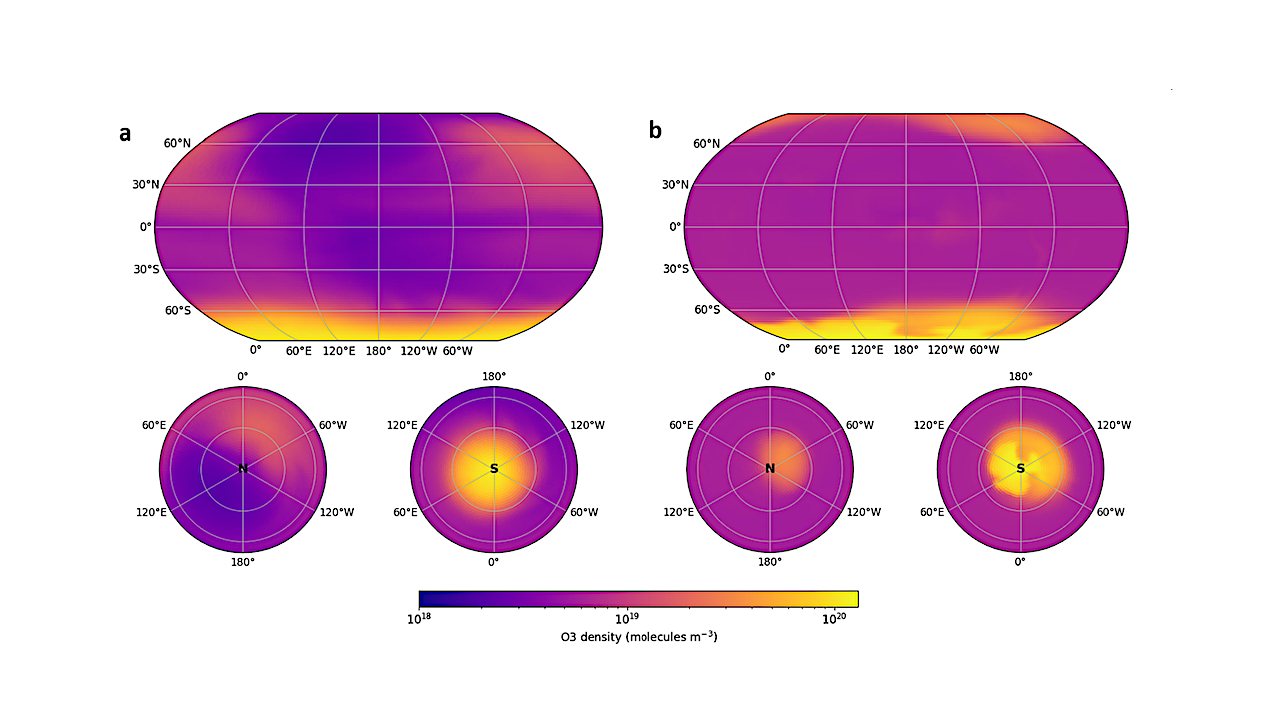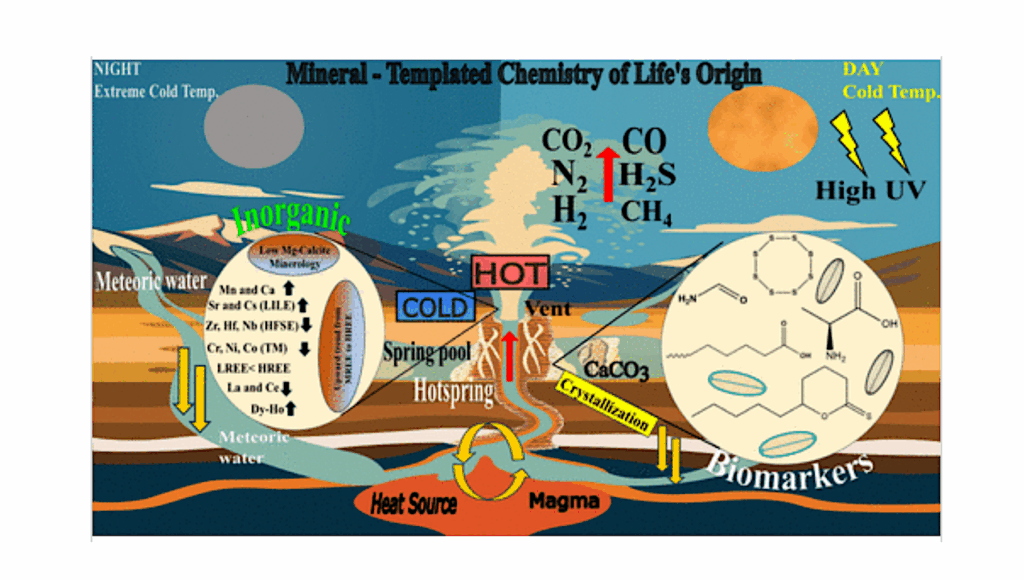Asymmetries In The Simulated Ozone Distribution On TRAPPIST-1e Due To Orography

TRAPPIST-1e is a tidally locked rocky exoplanet orbiting the habitable zone of an M dwarf star. Upcoming observations are expected to reveal new rocky exoplanets and their atmospheres around M dwarf stars.
To interpret these future observations we need to model the atmospheres of such exoplanets. We configured CESM2-WACCM6, a chemistry climate model, for the orbit and stellar irradiance of TRAPPIST-1e assuming an initial Earth-like atmospheric composition.
Our aim is to characterize the possible ozone (O3) distribution and explore how this is influenced by the atmospheric circulation shaped by orography, using the Helmholtz wind decomposition and meridional mass streamfunction.

Cross section of the O3 number density on the meridional plane passing through the a) substellar point and b) antistellar point for our TRAPPIST-1e model. — astro-ph.EP
The model included Earth-like orography and the substellar point was located over the Pacific Ocean. For such a scenario, our analysis reveals a North-South asymmetry in the simulated O3 distribution. The O3 concentration is highest below 10 hPa level (below ∼30 km) near the South pole.
This asymmetry results from the presence of land masses on the night side that cause drag in near-surface flows and lead to an asymmetric meridional overturning circulation.
Catalytic species were roughly symmetrically distributed and were not found to be primary driver for theO3 asymmetry. The total ozone column (TOC) density was higher for TRAPPIST-1e compared to Earth, with 8000 Dobson Units (DU) near the South pole and 2000 DU near the North pole.
The results emphasize the sensitivity of O3 to model parameters, illustrating how incorporating Earth-like orography can affect atmospheric dynamics and O3 distribution. This link between surface features and atmospheric dynamics underlines the importance of how changing model parameters used to study exoplanet atmospheres can influence the interpretation of observations.
Anand Bhongade, Daniel R Marsh, Felix Sainsbury-Martinez, Gregory J Cooke
Comments: Submitted to ApJ
Subjects: Earth and Planetary Astrophysics (astro-ph.EP)
Cite as: arXiv:2407.02444 [astro-ph.EP] (or arXiv:2407.02444v1 [astro-ph.EP] for this version)
https://doi.org/10.48550/arXiv.2407.02444
Focus to learn more
Submission history
From: Felix Sainsbury-Martinez
[v1] Tue, 2 Jul 2024 17:21:00 UTC (7,846 KB)
https://arxiv.org/abs/2407.02444
Astrobiology,








